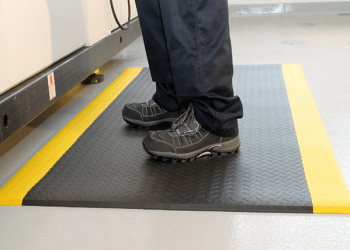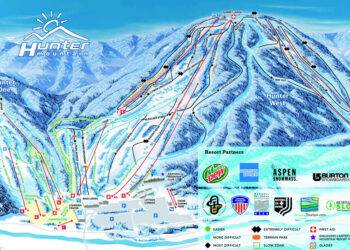Proper turf installation is essential for creating a beautiful and functional lawn. Whether you are installing turf for a residential or commercial property, it is important to understand the importance of proper installation techniques. This article will provide a comprehensive guide to turf installation, including the benefits of hiring expert turf installation services, choosing the right type of turf for your lawn, site preparation, techniques for proper installation, maintaining your newly installed turf, common mistakes to avoid, the timeline for turf growth, the cost of turf installation, and tips for finding the right turf installation company.
Key Takeaways
- Proper turf installation is important for a healthy and beautiful lawn.
- Hiring expert turf installation services can save time and ensure quality results.
- Choosing the right type of turf for your lawn depends on factors such as climate and usage.
- Site preparation is crucial for proper turf installation and includes soil testing and grading.
- Techniques for proper turf installation include laying the turf in a staggered pattern and watering thoroughly.
Understanding the Importance of Proper Turf Installation
Having a well-installed turf offers numerous benefits. Firstly, it enhances the aesthetic appeal of your property. A lush green lawn can significantly improve the overall appearance of your home or business. Additionally, a well-installed turf provides a safe and comfortable space for outdoor activities such as playing sports or hosting gatherings. It also helps to reduce soil erosion and improve water drainage.
On the other hand, improper turf installation can lead to a range of problems. If the turf is not installed correctly, it may develop uneven patches or gaps, which can be unsightly and make it difficult to maintain a uniform lawn. Poorly installed turf may also have issues with water drainage, leading to water pooling or flooding in certain areas. Furthermore, improper installation can result in the growth of weeds or pests, which can damage the turf and require additional maintenance.
Benefits of Hiring Expert Turf Installation Services
When it comes to turf installation, it is highly recommended to hire professional services. Expert turf installation companies have the necessary expertise and experience to ensure that your turf is installed correctly and efficiently. They are familiar with the best practices and techniques for installing different types of turf and can provide guidance on selecting the right type of turf for your specific needs.
In addition to their knowledge and expertise, professional turf installation services have access to high-quality materials and equipment. They can source the best turf varieties that are suitable for your climate and soil conditions. They also have the necessary tools and equipment to prepare the site and install the turf properly. By hiring professionals, you can be confident that your turf will be installed using the best materials and techniques, resulting in a beautiful and long-lasting lawn.
Hiring expert turf installation services can also save you time and money in the long run. Turf installation requires careful planning, preparation, and execution. By outsourcing this task to professionals, you can focus on other aspects of your project or daily life. Additionally, professional installation ensures that the turf is installed correctly the first time, reducing the need for costly repairs or replacements down the line.
Choosing the Right Type of Turf for Your Lawn
Selecting the right type of turf is crucial for achieving a healthy and vibrant lawn. There are several factors to consider when choosing turf, including climate, soil type, intended use, and maintenance requirements.
Different turf varieties thrive in different climates. Some varieties are better suited for warm climates, while others are more tolerant of cold temperatures. It is important to choose a turf variety that is well-adapted to your local climate to ensure its long-term success, such as turf installation in Wollongong versus turf in Perth.
Soil type is another important consideration when selecting turf. Some turf varieties prefer sandy soils, while others thrive in clay or loam soils. Understanding your soil type and selecting a turf variety that is compatible with it will help ensure optimal growth and health.
The intended use of your lawn should also influence your choice of turf. If you have children or pets who will be using the lawn frequently, you may want to choose a more durable variety that can withstand heavy foot traffic. Alternatively, if you are primarily concerned with aesthetics, you may opt for a finer-textured turf variety.
Finally, consider the maintenance requirements of different turf varieties. Some varieties require more frequent mowing, watering, and fertilizing, while others are more low-maintenance. Be sure to choose a turf variety that aligns with your desired level of maintenance commitment.
Some popular types of turf include Bermuda grass, Zoysia grass, Kentucky bluegrass, and fescue grass. Bermuda grass is known for its excellent heat and drought tolerance, making it a popular choice for warm climates. Zoysia grass is a versatile turf variety that can tolerate both sun and shade, making it suitable for a wide range of climates. Kentucky bluegrass is a cool-season grass that is known for its lush appearance and ability to withstand heavy foot traffic. Fescue grass is a cool-season grass that is well-suited for shady areas and requires less water than other varieties.
Site Preparation: A Crucial Step in Turf Installation
Proper site preparation is a crucial step in turf installation. It involves preparing the soil to create an optimal environment for the turf to take root and thrive. Neglecting this step can result in poor turf growth and performance.
The first step in site preparation is to remove any existing vegetation or debris from the area where the turf will be installed. This can be done by manually removing weeds or using herbicides to kill off unwanted vegetation. It is important to ensure that the site is clear of any obstacles that could hinder the growth of the turf.
Next, the soil should be tested to determine its pH level and nutrient content. This information will help determine if any amendments are needed to improve the soil quality. Common soil amendments include adding organic matter such as compost or peat moss to improve drainage and fertility.
After testing and amending the soil, it should be thoroughly tilled or aerated to loosen it up and create a favorable environment for root growth. This will also help improve water infiltration and drainage.
Finally, the site should be graded to ensure proper water drainage. The surface should be sloped away from buildings and other structures to prevent water pooling or flooding. Proper grading is essential for maintaining a healthy and functional lawn.
Techniques for Proper Turf Installation
Once the site has been properly prepared, it is time to install the turf. Proper installation techniques are essential for ensuring that the turf establishes well and grows uniformly.
The first step in turf installation is to lay down a layer of topsoil or compost. This provides a nutrient-rich base for the turf and helps improve root establishment. The topsoil should be spread evenly across the site and raked to create a smooth surface.
Next, the turf rolls should be laid out on the prepared site. It is important to start at one end of the site and work your way across, ensuring that each roll is tightly butted against the previous one. This will help prevent gaps or uneven patches in the turf.
Once all the turf rolls have been laid out, they should be rolled with a lawn roller to ensure good soil-to-turf contact. This will help the roots establish quickly and promote uniform growth.
After rolling, the turf should be thoroughly watered to ensure that it is properly hydrated. Watering should be done immediately after installation and continued regularly until the turf is fully established. Proper watering is crucial for root development and overall turf health.
Maintaining Your Newly Installed Turf: Dos and Don’ts
Proper maintenance is essential for ensuring that your newly installed turf thrives and remains healthy at your 1960’s Australian home. Here are some tips for maintaining your newly installed turf:
– Do water your turf regularly: Newly installed turf requires frequent watering to promote root establishment. Water deeply but infrequently to encourage deep root growth.
– Do mow your turf at the correct height: Set your mower blades at the recommended height for your specific turf variety. Mowing too low can stress the grass and make it more susceptible to disease and weed invasion.
– Do fertilize your turf as needed: Follow the recommended fertilization schedule for your specific turf variety. Applying too much fertilizer can burn the grass, while applying too little can result in nutrient deficiencies.
– Do aerate your turf: Aerating helps alleviate soil compaction and improves water and nutrient penetration. It should be done annually or as needed.
– Don’t overwater your turf: Overwatering can lead to shallow root growth and make the turf more susceptible to disease and weed invasion. Water deeply but infrequently, allowing the soil to dry out between waterings.
– Don’t mow your turf when it is wet: Mowing wet turf can result in uneven cuts and clumping of grass clippings, which can smother the grass and promote disease.
– Don’t apply herbicides or pesticides without proper knowledge: If you need to apply herbicides or pesticides to control weeds or pests, make sure to read and follow the instructions carefully. Applying these chemicals incorrectly can damage your turf and harm the environment.
Common Mistakes to Avoid During Turf Installation
During turf installation, there are several common mistakes that should be avoided to ensure a successful outcome. Here are some of the most common mistakes and how to avoid them:
– Failing to properly prepare the site: Skipping or rushing through the site preparation process can result in poor turf growth and performance. Take the time to properly clear the site, test and amend the soil, and grade the area for proper drainage.
– Installing turf on compacted soil: If the soil is compacted, it will be difficult for the roots to penetrate and establish. Make sure to aerate or till the soil before installing the turf to create a loose and friable environment for root growth.
– Overwatering or underwatering: Proper watering is crucial for successful turf establishment. Overwatering can lead to shallow root growth and make the turf more susceptible to disease and weed invasion. Underwatering can result in poor root establishment and turf death. Follow the recommended watering guidelines for your specific turf variety.
– Failing to roll the turf: Rolling the turf after installation helps ensure good soil-to-turf contact and promotes uniform growth. Skipping this step can result in uneven patches or gaps in the turf.
– Neglecting proper maintenance: Once the turf is installed, it is important to provide proper maintenance to ensure its long-term health and performance. This includes regular watering, mowing at the correct height, fertilizing as needed, and addressing any pest or weed issues promptly.
How Long Does it Take for Newly Installed Turf to Grow?
The timeline for turf growth can vary depending on several factors, including the type of turf, climate, soil conditions, and maintenance practices. In general, it takes about 2-3 weeks for newly installed turf to establish roots and start growing. However, it can take several months for the turf to fully mature and develop a dense and uniform appearance.
During the first few weeks after installation, it is important to provide regular watering to promote root establishment. The roots will gradually penetrate the soil and anchor the turf in place. After about 2-3 weeks, you can start reducing the frequency of watering as the roots become more established.
To encourage healthy growth, it is important to follow proper maintenance practices such as regular mowing, fertilizing, and aerating. These practices help promote root development and overall turf health. With proper care, your newly installed turf will continue to grow and thrive over time.
Cost of Turf Installation: Factors to Consider
The cost of turf installation can vary depending on several factors. Some of the main factors that can influence the cost include the size of the area to be turfed, the type of turf selected, site preparation requirements, and any additional services required.
The size of the area to be turfed is one of the main factors that will affect the cost. The larger the area, the more turf will be required, resulting in higher material costs. Additionally, larger areas may require more labor and equipment, which can also increase the overall cost.
The type of turf selected will also impact the cost. Some turf varieties are more expensive than others due to factors such as availability, demand, and maintenance requirements. It is important to consider both the upfront cost of the turf and the long-term maintenance costs when selecting a variety.
Site preparation requirements can also affect the cost of turf installation. If the site requires extensive clearing, grading, or soil amendment, these additional services will add to the overall cost. It is important to factor in these costs when budgeting for your turf installation project.
Finally, any additional services required such as irrigation installation or landscape design can also increase the cost. These services may be necessary depending on your specific needs and goals for your lawn.
On average, the cost of turf installation can range from $5 to $20 per square foot. However, it is important to obtain quotes from multiple turf installation companies to get an accurate estimate for your specific project.
Finding the Right Turf Installation Company for Your Needs
Finding the right turf installation company is crucial for ensuring a successful and stress-free installation process. Here are some factors to consider when choosing a turf installation company:
– Experience and expertise: Look for a company that has extensive experience in turf installation and a proven track record of successful projects. Ask for references or examples of their previous work to assess their expertise.
– Reputation: Research the company’s reputation by reading online reviews and testimonials from previous clients. A reputable company will have positive feedback and a good reputation within the industry.
– Licensing and insurance: Ensure that the company is properly licensed and insured. This will protect you in case of any accidents or damages that may occur during the installation process.
– Range of services: Consider the range of services offered by the company. Do they provide site preparation, turf installation, and maintenance services? Having a company that can handle all aspects of the project can save you time and hassle.
– Cost: Obtain quotes from multiple companies to compare prices and ensure that you are getting a fair and competitive price for your turf installation project. However, keep in mind that the cheapest option may not always be the best quality.
– Communication and customer service: Choose a company that is responsive to your inquiries and provides excellent customer service. Clear communication is essential for a smooth and successful installation process.
Proper turf installation is essential for creating a beautiful and functional lawn. Hiring expert turf installation services offers numerous benefits, including professional expertise, access to quality materials and equipment, and time and cost savings. When choosing a turf variety, consider factors such as climate, soil type, intended use, and maintenance requirements. Proper site preparation is crucial for ensuring optimal turf growth and performance. Follow best practices for turf installation to ensure a successful outcome. Maintain your newly installed turf by following proper maintenance practices and avoiding common mistakes. The timeline for turf growth can vary depending on several factors, but with proper care, your turf will continue to grow and thrive over time. Consider the factors that affect the cost of turf installation when budgeting for your project. Finally, take the time to find the right turf installation company for your needs by considering factors such as experience, reputation, licensing and insurance, and customer reviews. By taking these factors into account and following the proper steps for turf installation and maintenance, you can enjoy a beautiful and healthy lawn for years to come.











